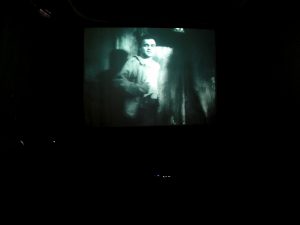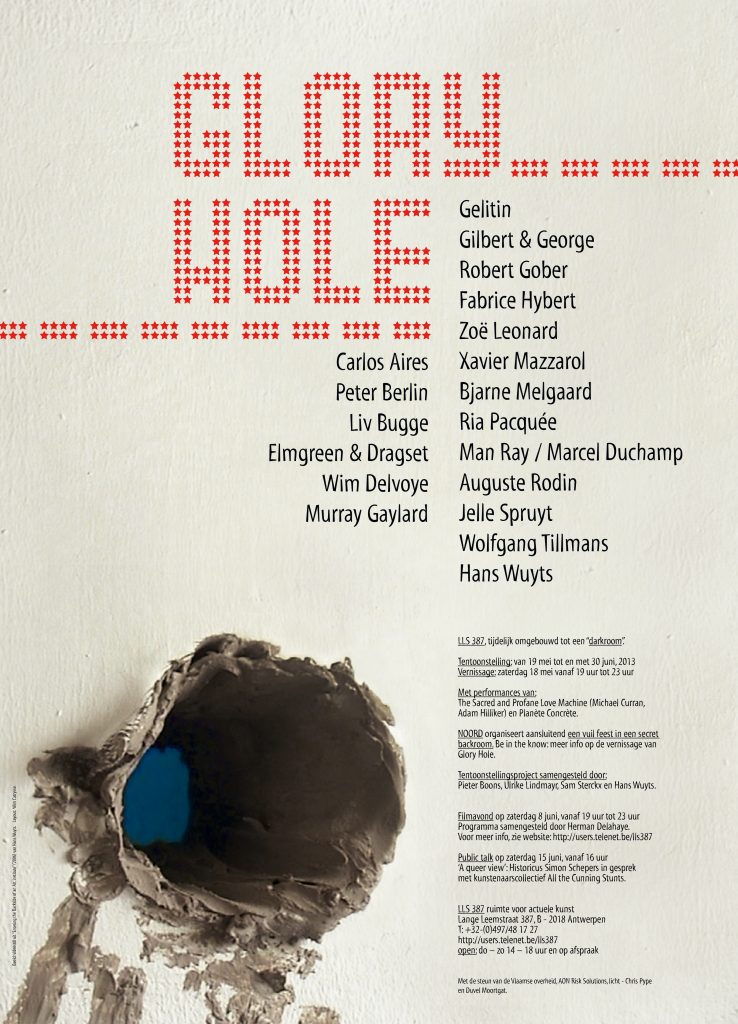Glory Hole
Carlos Aires, Peter Berlin, Liv Bugge, Elmgreen & Dragset, Wim Delvoye, Murray Gaylard, Gelitin, Gilbert & George, Robert Gober, Fabrice Hybert, Zoë Leonard, Xavier Mazzarol, Bjarne Melgaard, Ria Pacquée, Man Ray, Marcel Duchamp, Auguste Rodin, Jelle Spruyt, Wolfgang Tillmans en Hans Wuyts.
19.05.2013 — 30.06.2013
Tentoonstellingsproject samengesteld door Pieter Boons, Ulrike Lindmayr, Sam Sterckx en Hans Wuyts.
Met de steun van de Vlaamse overheid, AON Risk Solutions, licht – Chris Pype en Duvel Moortgat.
Link naar de bezoekersgids.
[NL]
Voor de tentoonstelling ‘Glory Hole’ wordt LLS 387 tijdelijk omgebouwd tot een ‘darkroom’. De darkroom werd in de jaren zestig en zeventig populair als kleine achterkamer van homobars, de ontmoetingsplek bij uitstek waar mannen in een afgeschermde omgeving openlijk en vrijblijvend seksueel contact kunnen hebben. Volgens Michel Foucault is binnen de stedelijke urbane context de darkroom de meest democratische ruimte: afkomst, sociale status, uiterlijk of leeftijd spelen er geen enkele rol. In deze verduisterde labyrintische structuur staat alles in functie van de beleving van anonieme seks: de zwarte wanden dienen om binnen de darkroom diverse kleinere ruimtes te creëren; de gaten in die wanden – ‘Glory Holes’ – bieden de mogelijkheid seksueel contact te hebben met iemand die niet zichtbaar is. De traditie van “Glory Holes” gaat terug tot het Oude Egypte. Vanaf de zestiende eeuw vinden we ze terug in Europa, in badhuizen, steegjes en toiletten in belangrijke handels- en havensteden zoals Antwerpen. De Glory Hole-diensten waren in eerste instantie gratis, alleen voor excellente prestaties werden munten of exotische zoetigheden door de opening gepord.
LLS 387 herbergt in de beladen en schemerige darkroomatmosfeer een selectie kunstwerken, die op één of andere manier betrekking hebben tot LGBT (Lesbian, Gay, Bisexual, Transgender) -thema’s en/of de darkroom zelf. Soms heel letterlijk: zoals Fabrice Hyberts lustopwekkende schommel “Balançoire” (1992) of de anonieme voyeur uit “Viewing” (2002) van Elmgreen & Dragset. Soms metaforisch: bijvoorbeeld Hans Wuyts’ video “Entering the Backside of an Art Institute” (2006) of Robert Gobers in de muur gemonteerde afvoerputje, “Drain” (1989). Het beeld “Bronzen Tijdperk” (1876 – 1880) van Auguste Rodin speelt door de iconische waarde, die het werk voor vele holebi’s heeft, een centrale rol in de tentoonstelling.
De integratie van kunstwerken zoals Liv Bugges zelfportret “Creating the Beast” (2002) of de fotografisch vastgelegde toilet-graffiti “I Love Pussy” (1994) van Zoë Leonard doorbreekt dan weer de mannelijke exclusiviteit van de darkroom en zorgt voor een beladen spanning. Eveneens zijn er kunstwerken afkomstig uit de Antwerpse scene in de tentoonstelling opgenomen zoals Jelle Spruyts seksueel getinte “Splits” (2013) of Ria Pacquées “The Collector of Stones” (Furka, 1992) uit de fotoserie “It”.
De plaatsing van deze en andere kunstwerken in de complexe en dwingende tentoonstellingsstructuur – geïnspireerd op een darkroom – roept een plek op waar je in dode hoeken kan verdwalen en het spel gespeeld wordt van kijken en bekeken worden. Dit spel tussen bezoeker en kunstwerken vormt geen alledaagse manier van tentoonstellen. Door middel van displacement zoekt het bewust een vervreemding op waardoor de bezoeker gedwongen wordt een nieuwe verhouding met de getoonde kunstwerken aan te gaan.
In de overwegend donkere tentoonstellingsruimte is zowel de bezoeker als het kunstwerk zichtbaar en onzichtbaar, aanwezig of afwezig.
‘Glory Hole’ vindt plaats in de aanloop naar de World Outgames die in de zomer van 2013 georganiseerd worden.
De tentoonstelling is mogelijk gemaakt dankzij de generositeit van de volgende bruikleengevers: Yannicke en Wilfried Cooreman, Hoger Iinstituut voor Schone Kunsten Gent, Koninklijk museum voor Schone Kunsten Antwerpen, Mimi en Filiep Libeert, Middelheimmuseum Antwerpen, MV Collection Belgium, Stedelijk Museum voor Actuele Kunst Gent, Stella Lohaus, Jessy en Ronny Van de Velde, Tim Van Laere Gallery / Gelitin en Bernhard Willhelm.
Met dank aan: Lucie Bausart, Nadia Bijl, Martin Blank, Gregory Brems, Cleo Cafmeyer, Wim Catrysse, Vaast Colson, Lisbet Cools, Yirka De Brucker, Katinka de Jonge, Harry Heirmans, Vedran Kopljar, Jan Matthé, Sis Matthé, Hannelore Mattheus, M HKA, Francine Moye, Sander Michiels, Paul Perdieus, Mima Schwahn, Naira Stergiou, Sietske Van Aarde, Het Toneelhuis, Bart Vanlommel, Bart Vermeiren, John Waumans en Sara Weyns.
[EN]
For the exhibition Glory Hole the space at LLS 387 is transformed into a darkroom. Since the nineteen-sixties the darkroom – usually a small back room – has been a common feature of a gay bar, a meeting place par excellence, where men can openly engage in consensual sex in a shielded environment. According to Michel Foucault, within the urban context the darkroom is the most democratic space, where origin, social status, appearance and age are irrelevant. In this dark labyrinthine structure everything is geared to the experience of anonymous sex. Black walls create various smaller spaces within the darkroom; holes in the walls – the ‘glory holes’ – offer the possibility of sexual contact with someone unseen. The tradition of “Glory Holes” goes back as far as Ancient Egypt. In Europe they have been common since the sixteenth century. “Glory holes” appear then particularly in alleyways, bathhouses and toilets located in major port cities and trading towns such as Antwerp. Glory hole activity was free, but monetary tips or exotic candies were often poked through the hole as a reward for excellent work.
In this charged and dim atmosphere LLS 387 harbours a selection of artworks that in one way or another relate to LGBT (Lesbian, Gay, Bisexual, Transgender) themes and/or to the darkroom itself. Sometimes quite literally, as in the case of Fabrice Hybert’s stimulative swing Balançoire (1992) or the anonymous voyeur in Elmgreen & Dragset’s Viewing (2002); sometimes metaphorically, like Hans Wuyts’s video Entering the Backside of an Art Institute (2006) or Robert Gober’s Drain (1989), installed directly into the wall, for example. Due to its iconic value for many gays, Auguste Rodin’s sculpture Bronze Age (1876-1880) occupies a key place in the exhibition.
The integration of works such as Liv Bugge’s self-portrait Creating the Beast (2002) and Zoë Leonard’s photographically documented toilet graffiti I Love Pussy (1994) breaches the male exclusivity of the darkroom and creates a highly charged tension. Also included in the exhibition are works from the Antwerp scene, such as Jelle Spruyt’s sexually tinged Splits (2013) and Ria Pacquée’s The Collector of Stones (Furka, 1992) from the photo series It.
The positioning of these and other works in the complex and compelling exhibition structure – inspired by the darkroom – evokes a place where you can stray into dead-ends and where a game of seeing and being seen is played out. That game between visitor and works of art is far from the usual way of exhibiting. Displacement is used to cause a deliberate alienation that forces the visitor to enter into a new relationship with the works on display.
In the mostly dark exhibition space both the visitor and the artworks are visible and invisible, present or absent.
Glory Hole takes place in the run-up to the World Outgames to be held in Antwerp in the summer of 2013.
The exhibition has been made possible because of the generosity of the following lenders: Yannicke en Wilfried Cooreman, Hoger Instituut voor Schone Kunsten Gent, Koninklijk museum voor Schone Kunsten Antwerpen, Mimi en Filip Libeert, Middelheimmuseum Antwerpen, MV Collection Belgium, Stedelijk Museum voor Actuele Kunst Gent, Stella Lohaus, Jessy en Ronny Van de Velde, Tim Van Laere Gallery / Gelitin en Bernhard Willhelm.
With thanks to: Lucie Bausart, Nadia Bijl, Martin Blank, Gregory Brems, Cleo Cafmeyer, Wim Catrysse, Vaast Colson, Lisbet Cools, Yirka De Brucker, Katinka de Jonge, Harry Heirmans, Vedran Kopljar, Jan Matthé, Sis Matthé, Hannelore Mattheus, M HKA, Francine Moye, Sander Michiels, Paul Perdieus,, Mima Schwahn, Agnes Peschta, Naira Stergiou, Sietske Van Aarde, Het Toneelhuis, Bart Vanlommel, Bart Vermeiren, John Waumans en Sara Weyns.
HOOFDRUIMTE:
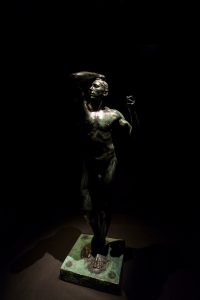

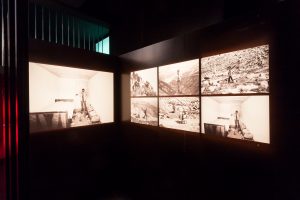
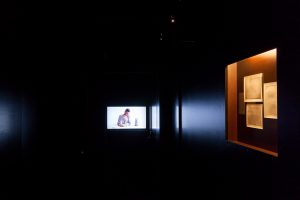
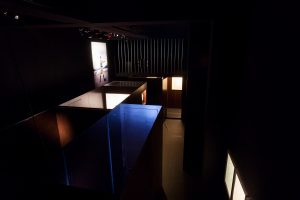
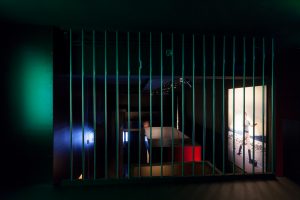
TWEEDE RUIMTE (TUINKAMER):

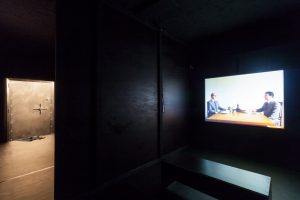
Performances tijdens de vernissage op zaterdag 18 mei
THE SACRED AND PROFANE LOVE MACHINE: MICHAEL CURRAN & ADAM HILLIKER):
PLANETE CONCRETE:

Public talk ‘A queer view’ op zaterdag 15 juni
Performance by the artist collective All The Cunning Stunts: All that glitter is pixels (a handshake in four dimensions)
Talk by Simon Schepers (historian)
“L’homme heureux n’a pas de chemise” – The embodiment of masculinity in the Belgian physical culture periodical Muscles Magazine, 1946-1969.
Talk by All The Cunning Stunts (AtCS):
Artists Liz Allan, Clare Noonan, Rachel O’Neill and Marnie Slater work together, taking their love of colour, low-tech Photoshop kinks, queer-positive sloganisms and collective laughter from the homo-local to the universal.
SIMON SCHEPERS:
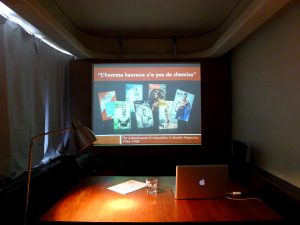
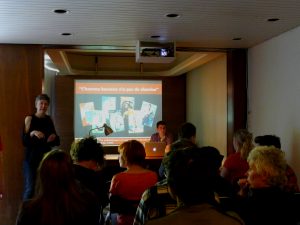
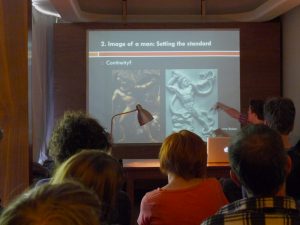
ALL THE CUNNING STUNTS:
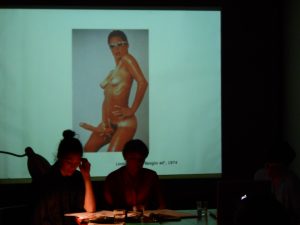
Filmavond op zaterdag 8 juni
samengesteld door Herman Delahaye
EAN GENET: UN CHANT d’AMOUR
